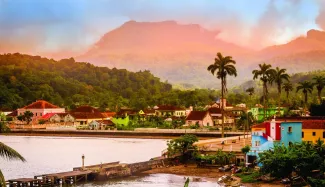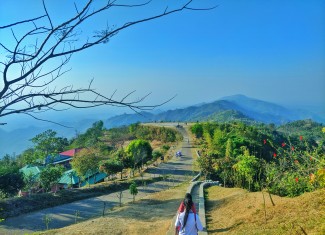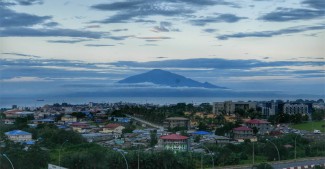Deputy Director General in the Department of Planning and Cooperation at the Lao PDR Ministry of Industry and Commerce discusses harmonizing trade, regional integration and managing resources wisely
Can you summarize the state of Lao PDR’s trade?
Lao PDR’s average economic growth has been about 7.1% over the past decade. Part of that is because we are surrounded by major exporting countries like China and Thailand. But we could have more demand in terms of exports and also attract more of the investments that are coming into the region.
For our economy, we are trying to shift from mining and hydropower to agro-processing and industry. Now it’s a resource-based economy and we had US$4.5 billion in exports in 2018, but that’s mainly from the hydropower and mining sectors. There are also some industries that are growing slowly like tourism, garments, wood and wood products, and agribusiness. In 2018 our major import was fuels and some goods, and part of that is because of the Kunming to Singapore railway construction – from Kunming to Lao PDR to Thailand to Singapore there will be a transit path for goods coming into the country. We also have other infrastructure projects within the country that could result in import of fuels and construction materials and other goods.
As to whether our trade landscape has changed over the last decade, it has not changed much – we will still depend on the mining and hydropower sectors for a few years at least. From a trade policy perspective, diversification is also a key trade policy we need to proceed with, and this has been acknowledged in our National Socioeconomic Development Plan and our Trade and Private Sector Development Plan, considering that diversification is a key for our growth in the future.
What is Lao PDR doing to address this move to diversify and are there any difficulties in doing so?
We are tackling diversification. For example, there is a new project in the northern part of Lao PDR. First, we worked to minimize the cost of doing business by helping to improve the environment in the northern provinces, including how to improve the business registration process as well as trade facilitation in the region, like being able to export to China.
With this new project, we are focusing on specific sectors including corn, tea and rice as well as handicrafts in Luangnamtha, Oudomxay and Phongsaly provinces, and this is part of the work to help diversification and tackle export difficulties.
The Ministry has been really successful in mobilizing outside resources to support trade development in the country. Can you explain how this came about?
We are active with resource mobilization. We developed two Diagnostic Trade Integration Studies (DTIS), the first in 2006, the second in 2012, and we are now working on the third. We were able to attract funding following the release of the first and the second. We established a National Implementation Unit (NIU) in 2006 and set up our first multi-donor trust fund, what we call the TDF I or Trade Development Facility, at the same time.
With TDF I we attracted US$6.82 million from Australia, the European Union (EU) and Germany, and the World Bank is the trust fund administrator. We pulled these donors together and put the resources in one basket. For TDF II we obtained US$16.5 million from the World Bank, Australia, Germany, the United States and Ireland, and US$13 million for the Lao PDR Competitiveness and Trade project from Australia, the World Bank and Ireland.
What is it about Lao PDR’s trade efforts that has led to this?
Lao PDR is in the Association of Southeast Asian Nations (ASEAN) and we are surrounded by key exporters and other bigger economies like Thailand and Vietnam, not to mention China. We do need to catch up with others and that’s why I think with the assistance from development partners we have that opportunity. Also, since we are partnered with the Enhanced Integrated Framework (EIF) and did the DTIS with EIF, we have been able to prioritize our development agenda and have been able to attract some resources to fund our development work. We are maybe not the best model per se, but we have our mission and act accordingly. For example, we are the first country working with EIF that undertook a government-led DTIS and there are a few other countries that want to learn from our practices.
How is the country working to achieve its global trade goals, which all this funding is helping to support?
We are addressing diversification through our Ministry’s development programme, with three major pillars. The first is to promote deepening trade integration. We became a member of ASEAN in 1997 and the WTO in 2013; these are the two key organizations that we need to focus our efforts on. Especially with ASEAN, for Lao PDR it is very important because our major exports are to neighbouring countries so we need to promote our intra-regional trade, as well as deepening trade integration into the WTO. The second pillar is to build a better business environment and support ease of doing business. The third is helping the competitiveness of local enterprises to compete regionally and globally.
If you would like to reuse any material published here, please let us know by sending an email to EIF Communications: eifcommunications@wto.org.



